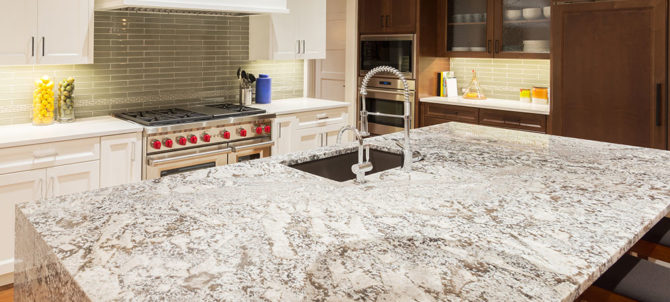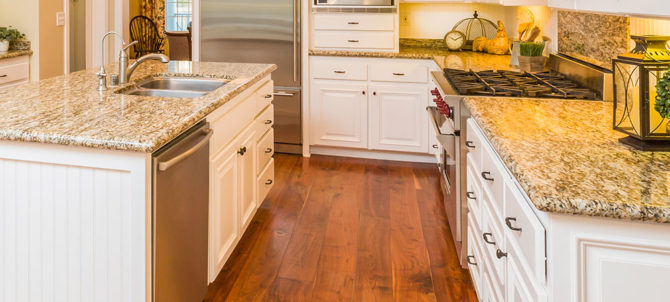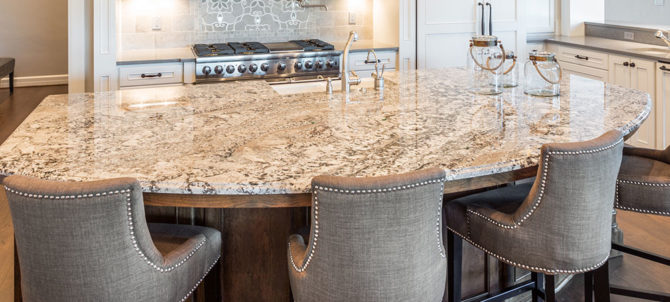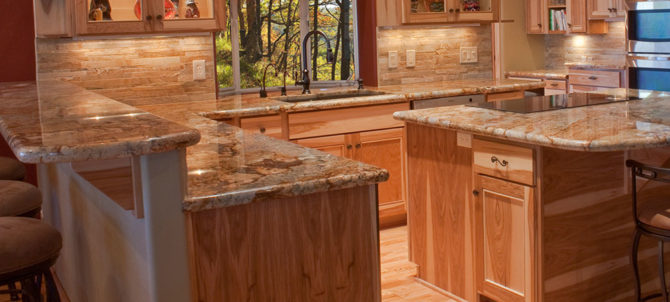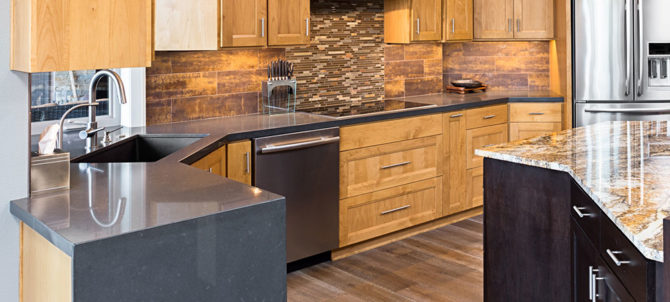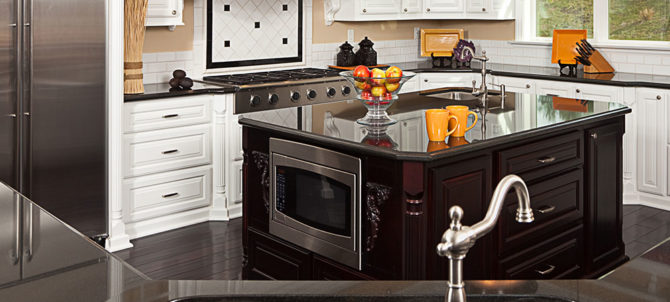
If there is one aspect of the kitchen that bears the brunt of cooking, hanging, and other daily activities, it must be the countertops. Fortunately, there are affordable countertop surfaces that do not sacrifice durability or aesthetics, and there are plenty of options available.
When deciding on the best kitchen countertops for your needs, you should consider options that fit your budget, how you intend to utilize the area, and, of course, ones that complement the overall décor scheme of your home.
We’ve compiled a list of the best affordable countertop solutions, ideal for anyone looking to keep kitchen costs under control while also finding a durable and stylish solution.
Laminate countertops
Despite having a somewhat negative reputation in the past and frequently appearing on lists of materials to avoid for kitchen countertops, laminate countertops are now a fantastic choice for anyone on a budget who still wants a stylish and long-lasting surface, thanks to significant advancements in manufacturing technology.
While this is the case, it is vital to note that lamination is not unbreakable. This material is typically constructed from a furniture board or particle board with multiple layers of durable printed paper.
This means that laminate countertops are durable, water-resistant, and stain-resistant, however, they are not scratch-proof.
If you choose a laminate kitchen countertop, work to protect your work surfaces by putting trivets beneath hot pots and pans and cutting boards when making food.
Tile
Although tile isn’t considered a particularly conventional option for countertops, it is absolutely something to consider if you want to cut costs, and thankfully, the tiled countertop style is still very popular.
While this is the case, there are certain drawbacks to tile counters to consider, with grout lines being one of the most significant issues. The good thing is that there are workarounds for this.
While tile can definitely make your countertop look a bit less high-end, for a modest investment, you can flat tile your entire countertop with pieces that look just like marble or have a granite look. You should note that to pull off this look, you should get a full slab.
For grout, opt for resin-based, stain-resistant, and non-absorbing. The larger the tile, the fewer grout lines there will be, so aim for the largest tile possible.
Concrete
Although concrete is frequently seen as one of the more expensive countertop materials, it does not have to be prohibitively pricey. Concrete can be the most affordable option if you’re willing to spend a lot of time on it.
If you value your time, concrete is not the greatest option. Concrete involves extensive leveling, screeding, troweling, and sanding. The necessary sealing and frequent maintenance can mount up over time.
Concrete countertops, professionally installed, will cost roughly the same as butcher block, but if you do it yourself, you can save a lot of money.
While concrete is an excellent material for waterfall countertops, it has a few drawbacks. For one, it must be sealed regularly to endure stains from cooking liquids and water and react to acidic chemicals.
Pallet wood
This is an excellent and economical countertop alternative that you can easily do yourself. It will also give your kitchen character and rustic charm.
If you have the time and the energy, you can make pallet wood look like it just came out of the sawmill planer. It takes a lot of work, sanding, wood filler, stain, resins, and patience, but you can turn used pallets into a beautiful countertop that looks better than butcher block or many of the other wood grain options available.
Pallets are free if you can get them locally from shops that are disposing of them. The remainder is simply sealant and sandpaper. This way, you get to have good-looking countertops at a low price.
Butcher block
Butcher block countertops are inexpensive and add a great rustic look to a kitchen. However, before you make a commitment, you should consider whether they are sturdy.
Unlike wood plank countertops, butcher block is constructed by gluing together timber planks on their sides. They are also occasionally fashioned of end-grain wood parts, which creates the distinctive chequerboard impression. If you know how to care for butcher block countertops, they can survive for more than 20 years.
Butcher block will be one of the most economical materials for low-cost countertop alternatives. Other than laminate, butcher’s block is about as affordable as it gets.
Prices vary based on how fancy you want it to look or the type of wood it is made of. Maple is often the least expensive wood for butcher’s block countertops, but different hardwoods might cost significantly more.
You must research and find the block that costs less and gives you a great experience.
Solid surface countertops
Solid-surface countertops can be a seamless, low-maintenance, and cost-effective solution when you are operating on a tight budget. Made from materials such as acrylic and polyester (or a combination of the two), they offer a huge choice of colors and designs that rival those of more expensive materials like quartz or granite.
They are not only stain and scratch-resistant but also allow for integrated sinks and easy minor damage repair, making them an economical and practical alternative for any kitchen or bathroom remodel.
However, because they have a modest impact on a home’s resale value and require expert installation, they may not appeal to long-term investors as much as luxury materials like granite and quartz.
If this is who you are, you are better off going for a more premium material.
Parting shot
These are some of the cheaper countertop materials that you can choose from. Regardless of the cost of the materials, remember to take good care of them the same way you would more premium countertops, such as granite countertops Durham.
